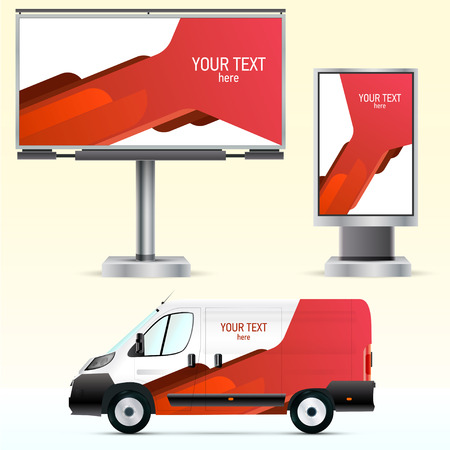Advertising on a moving vehicle

There are many different ways to get your message out to the masses, not many of which need to be committed to a single location. One of the most effective ways to get your advertising seen is to take it to the viewers as opposed to waiting for them to come upon it on their own. This explains why so many advertisers place their ads on moving vehicles, such as a bus, car, or train. Of the three, it is perhaps cars that get the most play and is the most flexible. Many business owners add wrap-around graphics that turn the car into a moving billboard of sorts. There are some definite pros and cons to going this route, so let’s take a look at what those might be.
Attention grabbing
If you have ever seen one of those graphic-wrapped vehicles out on the road, you have probably found yourself compelled to learn more about the business being advertised. Seeing an ad on the move while attached to a vehicle is not necessarily a new way to advertise, but it still stands out enough that it grabs the attention of the public in a way that other types of advertising cannot hope to achieve. If the ad is creative, funny or memorable and it is also mobile, it could be a very effective ad that delivers big results.
Great for local business
There are plenty of businesses whose goal is to be successful on a local scale. This type of advertising suits them perfectly. Displaying an ad on a bus that travels the same route that the business serves is a great way to reach your target audience. The beauty here is that the people you are trying to reach will end up seeing this ad a few times a day. This ensures that the name of your business will be etched into their memory.
Vandalism
As we move into the disadvantages of moving advertising, the first thing we need to discuss is vandalism. If you have the face of someone in your ad, it may end up being defaced with all sorts of little unwelcome additions. Vandals may also simply draw or paint over sections of the ad that basically make it impossible to read, especially when the vehicle is on the move.
Nighttime issues
Even though most major city streets are well lit, there is still going to be some difficulty in seeing your ads once the sun goes down. At night, you also have the glare of headlights to contend with, as their bright lights may render the ad nearly impossible to see. You could perhaps consider limiting these types of ad campaigns to the summer months when the daylight hours are longer.
Ad layout issues
With public transportations, where the windows and doors of the vehicle are very frequently opened and closed. Every time those doors or windows are open, the view of your ad may become distorted, obstructed or even changed to something else unintentionally. Unfortunately, this happens at a time when the vehicle is stationary and your ad is most likely to be seen and fully comprehended. Those changes could take away that advantage. Therefore, it is important to design the ad layout with the moving components in mind.
Related
- Five concerns with outdoor advertising
"When you are out and about, take a moment to look around and see just how common outdoor advertising is right now. You will see ads on billboards on the side of every highway, major or otherwise, on public transport, buildings, and just about anywhere that can hold an advertising banner. " More
- Email advertising for automobile service companies
"Buying a vehicle is one of the biggest investments that anyone will make in their life and it is often something you use every day. With that in mind, the majority of drivers go out of their way to protect that investment by making sure that their car is regularly serviced and maintained. " More
- Advertising at public events
"There are a lot of different places where you can go to get the word out about your business. Many companies are now using ad servers to display their ads online, as well as using tried and tested forms of advertising, such as print, TV, and radio. " More
 There are many different ways to get your message out to the masses, not many of which need to be committed to a single location. One of the most effective ways to get your advertising seen is to take it to the viewers as opposed to waiting for them to come upon it on their own. This explains why so many advertisers place their ads on moving vehicles, such as a bus, car, or train. Of the three, it is perhaps cars that get the most play and is the most flexible. Many business owners add wrap-around graphics that turn the car into a moving billboard of sorts. There are some definite pros and cons to going this route, so let’s take a look at what those might be.
There are many different ways to get your message out to the masses, not many of which need to be committed to a single location. One of the most effective ways to get your advertising seen is to take it to the viewers as opposed to waiting for them to come upon it on their own. This explains why so many advertisers place their ads on moving vehicles, such as a bus, car, or train. Of the three, it is perhaps cars that get the most play and is the most flexible. Many business owners add wrap-around graphics that turn the car into a moving billboard of sorts. There are some definite pros and cons to going this route, so let’s take a look at what those might be.